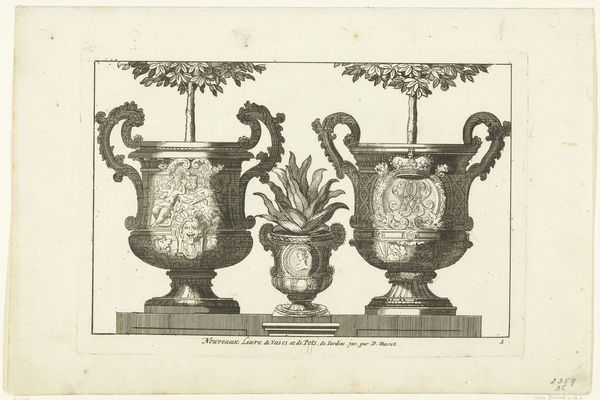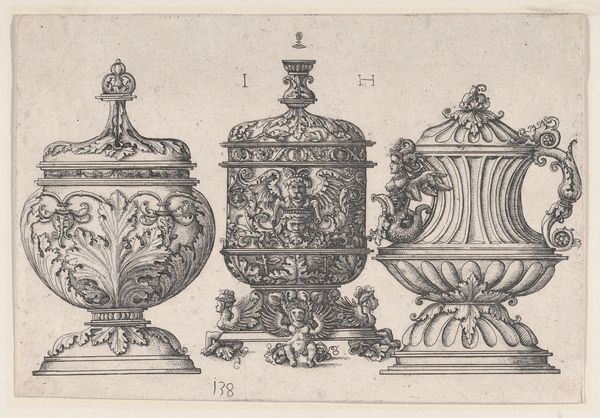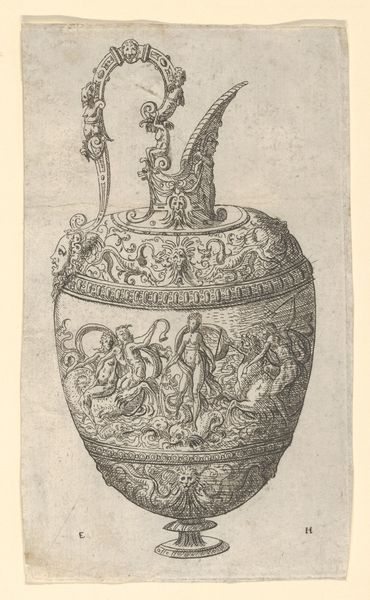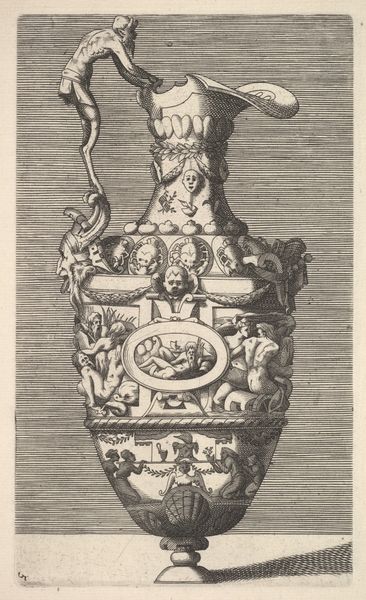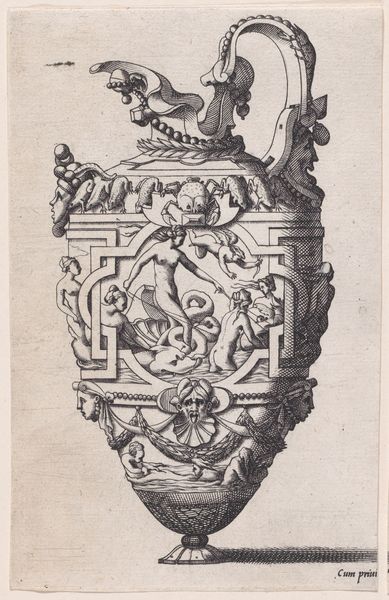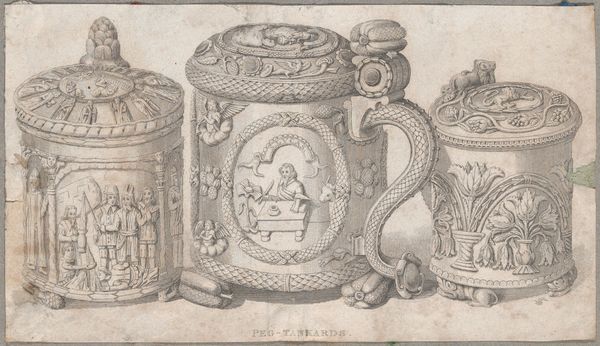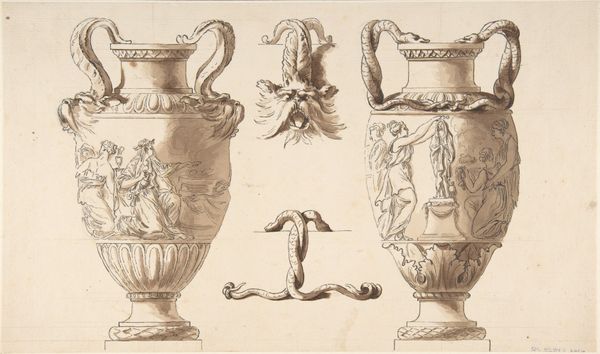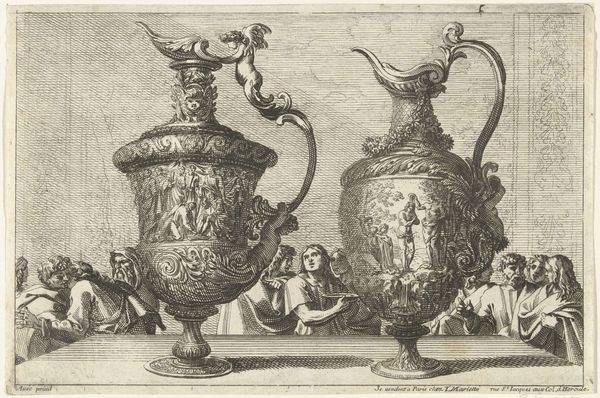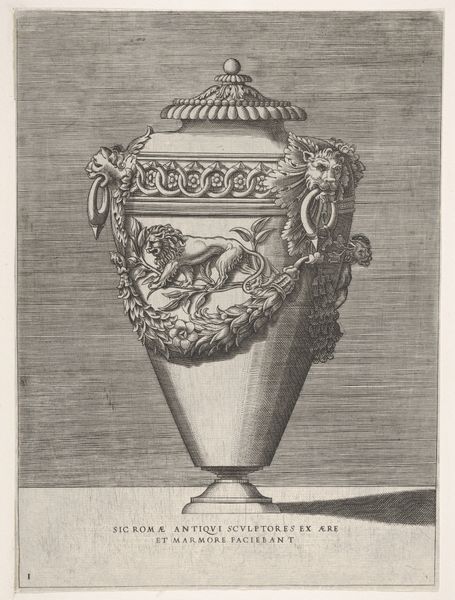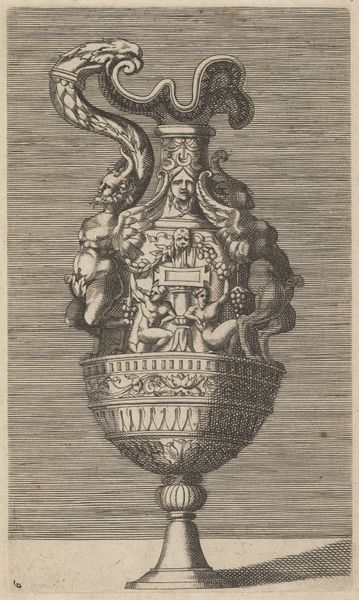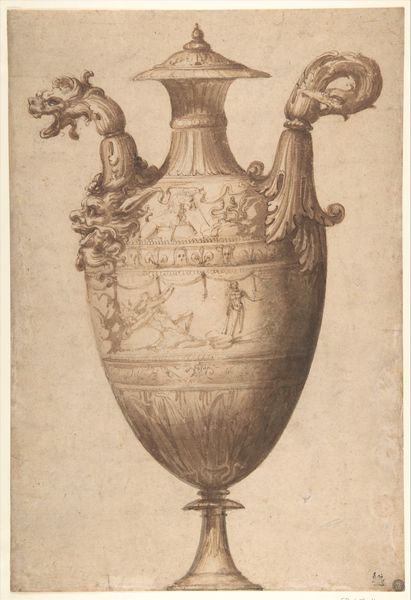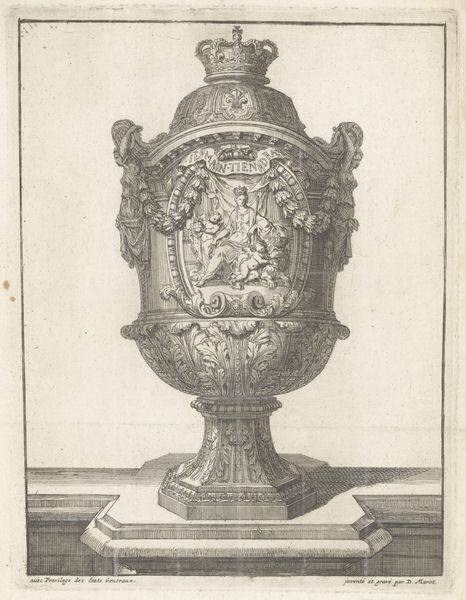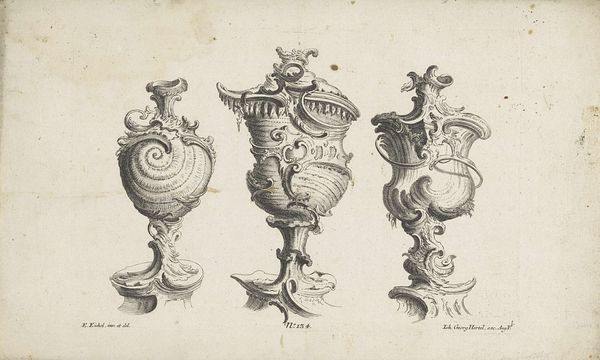
drawing, print, engraving
#
drawing
#
allegory
# print
#
figuration
#
form
#
11_renaissance
#
line
#
history-painting
#
engraving
Dimensions: sheet: 6 x 7 1/2 in. (15.3 x 19.1 cm) plate: 5 1/2 x 7 1/16 in. (14 x 18 cm)
Copyright: Public Domain
Editor: Here we have "Two Ewers" from sometime between 1525 and 1600, by René Boyvin. It's an engraving, so mostly line work, and the ewers themselves seem incredibly ornate. They almost feel like miniature stages for little dramas. What strikes you most about their composition? Curator: The graphic precision is compelling. Notice how Boyvin uses line weight to create depth, pushing certain elements forward and allowing others to recede. The symmetry, while present, is not absolute. Consider how each ewer presents a unique tableau, but within a similar structural framework. Editor: I see what you mean, the handles are different, and the panels on the ewers show totally different scenes. They both have human figures, but they seem to be struggling against mythical beasts. Does that interplay speak to something specific? Curator: The tension comes from the careful arrangements of forms. The bodies are active, muscular, presented in dynamic poses that mirror the turbulent ornamentation surrounding them. This deliberate chaos emphasizes a formal harmony which elevates pure form over narrative clarity. Notice the way Boyvin uses hatching to modulate light and shadow, further emphasizing the three-dimensionality of the ewers, despite their printed medium. Editor: So, it's more about how the image is built, the choices Boyvin made with line and form, rather than trying to tell a specific story? Curator: Precisely. The allegorical figures, though engaging, serve primarily as compositional elements. It’s through their interplay – the push and pull of forms – that Boyvin achieves a complex visual equilibrium. The object, rather than the narrative becomes the focus of our appreciation. Editor: That’s a completely different way of looking at it than I would have thought. Now I’m noticing the tiny details of the engraving much more. Curator: By considering how the object is put together, instead of trying to identify every cultural reference, we are equipped to study what effect it can have on the viewer, by analyzing pure aesthetics.
Comments
No comments
Be the first to comment and join the conversation on the ultimate creative platform.
